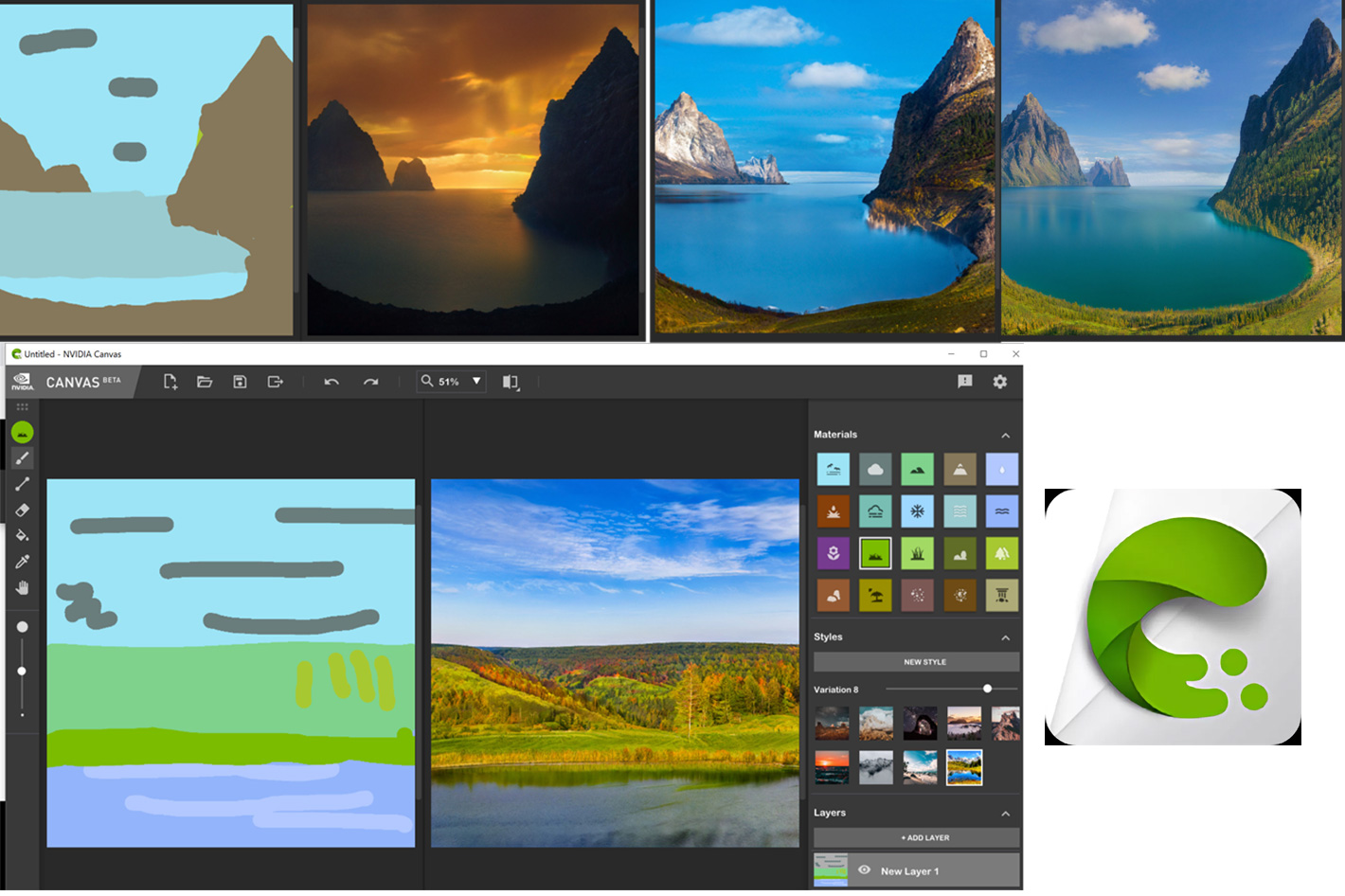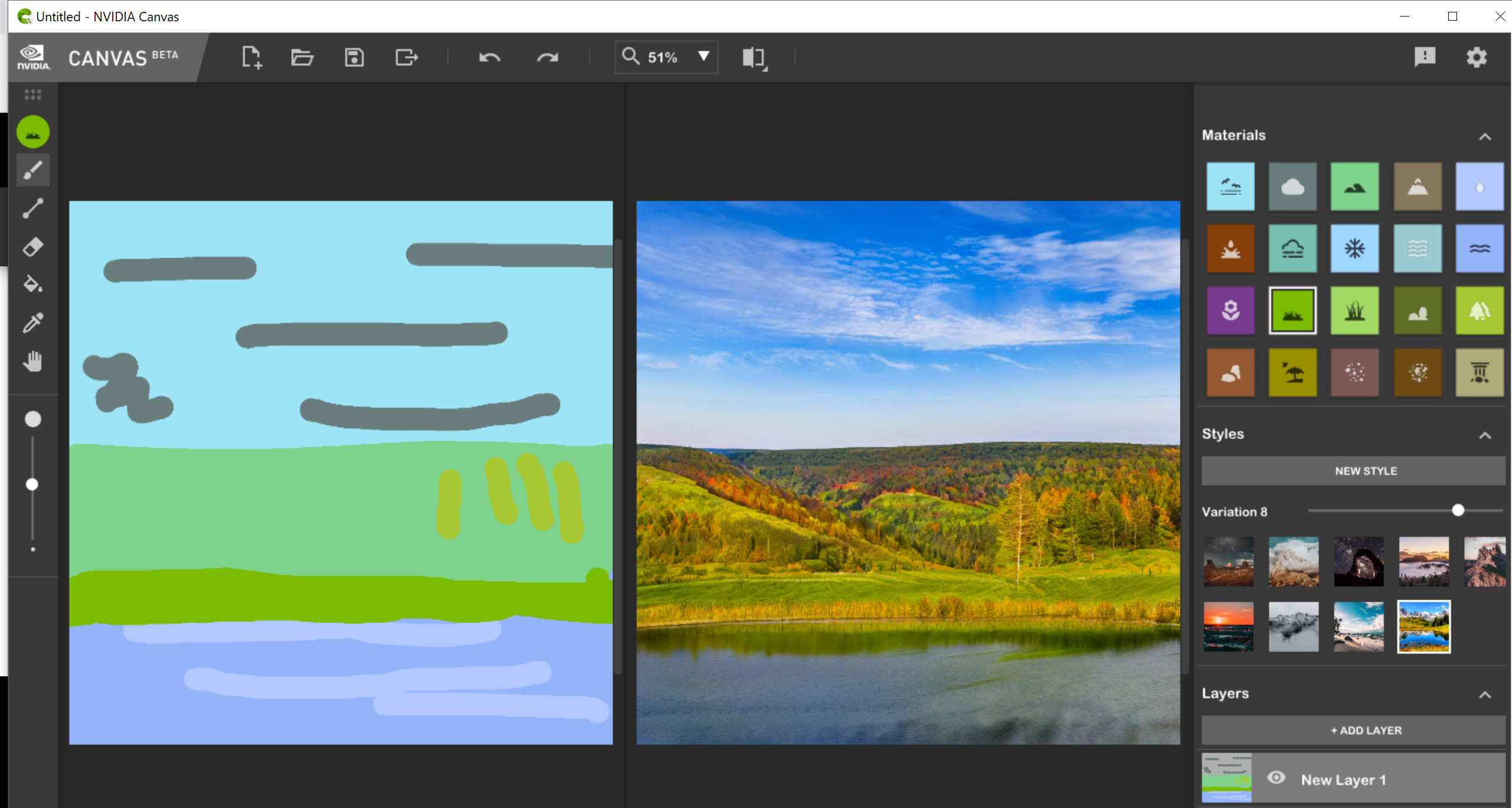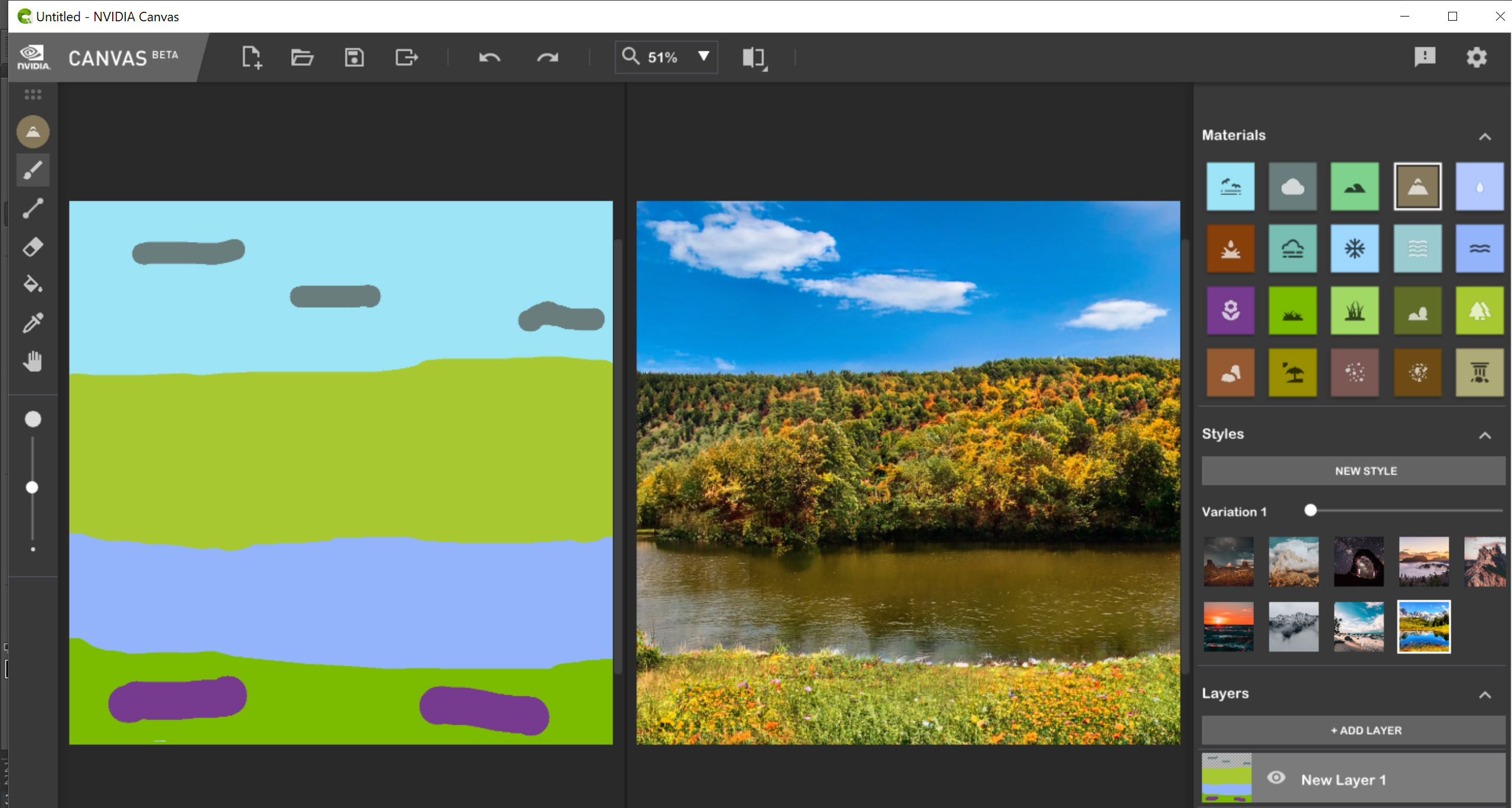
Artificial Intelligence is everywhere, and the variety of tools available is both intriguing and frightening: tools like NVIDIA Canvas, which I’ve been playing with for a while, are like magic for someone who is not good at drawing, but pose one question: with tools like this, that can learn as they go, will pencil artists one day be out of their job? And photographers?
While I’ve no answers to that question – and, I believe, no one really has – I must admit NVIDIA Canvas is an exciting solution for anyone who needs to share ideas and needs a tool that can transform a few lines in something that looks real. There are obvious limitations to what NVIDIA Canvas can do, but the way it uses AI to turn simple brushstrokes into realistic landscape images is nothing short of magic. NVIDIA says the tool, which is still in beta and recently had some important updates for workflow integration, can “create backgrounds quickly, or speed up your concept exploration so you can spend more time visualizing ideas.”
Canvas goal is not, at least as this stage, to be a tool to deliver final work. It’s meant to be used for artists to create environments for visualization, develop backgrounds for concept paintings, or just explore for fun. The good thing, and the images published here show it clearly, is that you don’t need to know how to draw to get results. The software’s interface is user-friendly and in a few minutes you’ll be exploring its potential.


NVIDIA Canvas uses the tensor cores in the RTX family of graphics cards from NVIDIA, so you do need to have one of those cards. I first tried the software with my RTX 3080 and lately I’ve used it with the new RTX 4090, but to capture images for this article I used my old RTX 2070, and it works well, even if not as fast at delivering results.
Now, when I mean it’s slower, it’s slower than the RTX 30 and RTX 40, but miles ahead of anything else in terms of speed. It’s almost instant, and that’s like magic for someone that still remembers using Bryce to create virtual landscapes. Bryce, introduced for Mac in 1994, with a Windows version in 1997, amazed everyone with its ability to create landscapes, although the process would take a long time on the hardware then available. Bryce 2.0 could do more than landscapes and the software evolved until 2018, when development was halted.

From Bryce to Canvas, a “Bryce on steroids”
I still have the manual for Aldus PhotoStyler on the shelf behind me in my office and could not resist to photograph its cover to put besides the box for Bryce 7 Pro, which shows a landscape created with Bryce and the note: The First Name in 3D Landscapes”. It makes sense to have those two giants from the 90s together, as Aldus PhotoStyler was the first 24 bit image editor for Windows.
At the time Bryce raised questions about what the future would bring, and that takes us directly to Canvas, which looks like a modern “Bryce” using Artificial Intelligence to create landscapes. Canvas has nine styles that modify the look and feel of a painting and twenty different materials ranging from sky and mountains to river and stone. Paint them on different layers to keep elements separate. You can start from scratch or get inspired by one of the sample scenes.
You don’t need to draw perfectly to get Canvas to work its magic. Pick the real-world material you want to use, be it grass, clouds or rock, paint simple shapes and lines suggesting how you want your image to look, and the AI model fills the screen with show-stopping results. If you don’t like what you see, just swap the materials, like placing grass where snow was and your Winter landscape becomes something else. The creative possibilities are endless and the slider allowing you to quickly change the mood helps to make the whole process magic… and fun.
Once you’ve a result that you want to use, Canvas lets you import your work into Adobe Photoshop so you can continue to refine it or combine your creation with other artwork.
Canvas is still in beta and NVIDIA is accepting suggestions about features to be added. As it is now, the tool is not only a show of what AI can do, but a real asset for anyone who needs to conceptualize landscapes, as it allows to explore new designs as ideas flow. Creators can rapidly paint a landscape to express an idea rather than searching hours for the perfect stock photo… so yes, here is another area where some photographers might feel the sting of AI.
NVIDIA Canvas uses a GAN (Generative Adversarial Network) to turn a rough painting of a segmentation map into a realistic landscape image. 5 million photographs of landscapes were used to train the network on an NVIDIA DGX (a line of Nvidia-produced servers and workstations which specialize in using GPGPU to accelerate deep learning applications), but Canvas allows users to use their own images or photos to affect the style and look of the resulting images, and that’s something that many will, no doubt, want to explore as creatives discover more of the options offered by the software.
As ProVideo Coalition mentioned in January, Canvas will introduce 360-degree images that can be used as environment maps in 3D apps. The ability to create 360 degree environment maps was announced at CES 2023. That will bring a new level of sophistication to what is already a magic software.
Getting started with NVIDIA Canvas couldn’t be easier. Simply download, install, and start creating right away. Remember you need to have a RTX GPU but, as shown here, even the humble RTX 2070 works fine.

